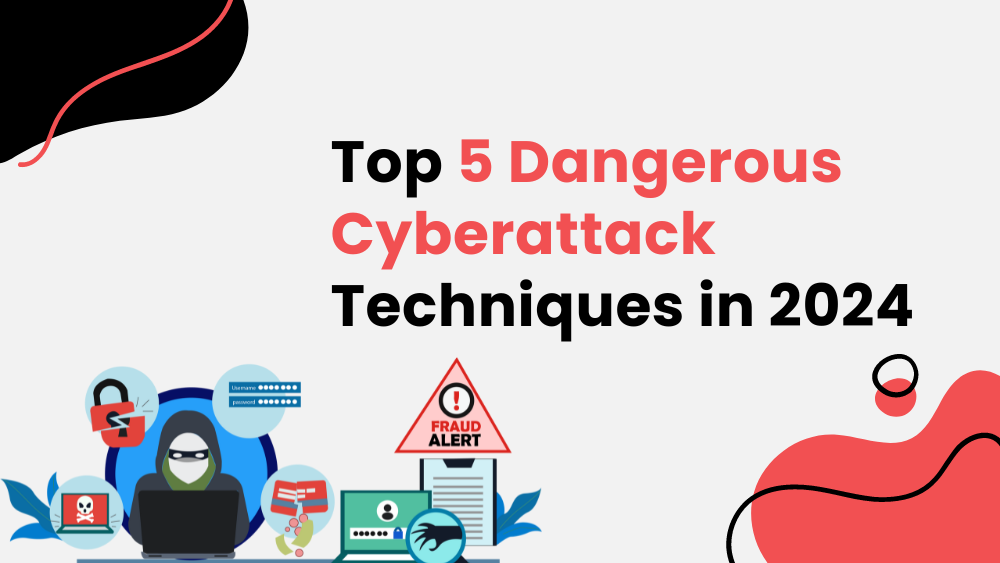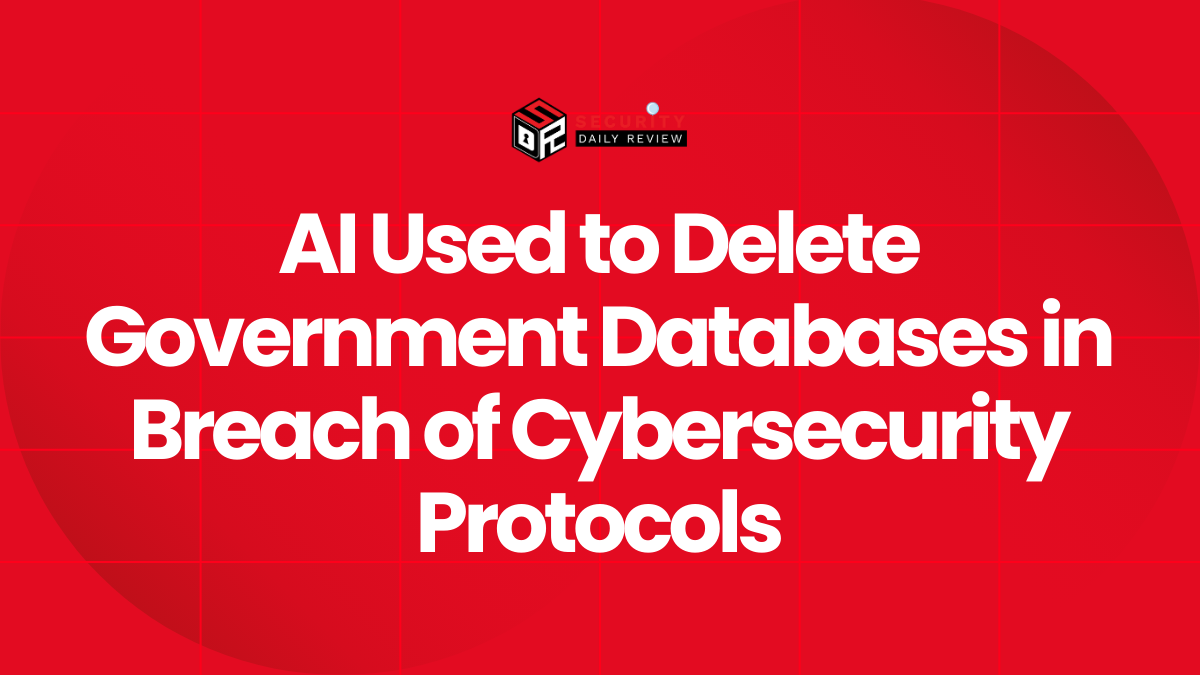The SANS Institute, a leading authority in cybersecurity research, education, and certification, recently released its annual Top Attacks and Threats Report, highlighting the 5 most dangerous cyberattack techniques enterprises need to prepare for in 2024. This blog delves into the five most critical threats identified by SANS, providing detailed explanations and actionable recommendations for enterprise businesses.
The Evolving Threat Landscape and the SANS Report
The SANS Institute’s annual report, presented at the RSA Conference, offers invaluable insights into the ever-shifting cyber threat landscape. It aims to equip organizations with the knowledge to anticipate future trends and strengthen their defenses against sophisticated and evolving attacks. This year’s report, focusing on emerging cyberattack techniques, underscores the increasing sophistication and pervasiveness of cyber threats, particularly those leveraging artificial intelligence (AI).
Top 5 Dangerous Cyberattack Techniques in 2024
The SANS Institute’s keynote presentation at the annual conference identified five new and particularly dangerous cyberattack techniques:
1. AI-Powered Child Sextortion: A Growing Threat to Individuals and Enterprises
Heather Mahalik Barnhart, a SANS DFIR Curriculum Lead and Senior Director of Community Engagement at Cellebrite, highlighted the disturbing rise of AI-powered child sextortion. This technique leverages AI deepfakes to create convincing, fabricated images or videos of victims without their knowledge or consent. The threat of these fabricated materials being shared online compels victims to comply with extortionists’ demands, even if those demands are baseless.
Impact on Enterprise Businesses: While seemingly a personal threat, AI-powered child sextortion can indirectly impact enterprises. Employees who fall victim may experience significant emotional distress, impacting their productivity and potentially leading to legal ramifications for the company if the extortion involves company data or resources. Furthermore, the reputational damage to the company could be substantial if an employee’s involvement in such a scheme becomes public.
Mitigation Strategies:
- Awareness and Education: Implement comprehensive training programs for employees to educate them about the dangers of online interactions with strangers and the importance of strong privacy settings on social media.
- Support Resources: Provide employees with access to resources like the National Center for Missing and Exploited Children’s “Take It Down” program and relevant support lines to assist victims in removing harmful content and obtaining necessary support.
- Cybersecurity Awareness Training: Regular cybersecurity awareness training should emphasize safe online practices, including avoiding suspicious links and attachments, and reporting any suspicious activity immediately.
2. Generative AI: Skewing Public Perception and Manipulating Political Discourse
Terrence Williams, a SANS DFIR Certified Instructor and Security Engineer, discussed the use of generative AI to manipulate public opinion, particularly in the context of the 2024 political elections. Deepfakes and targeted misinformation campaigns, facilitated by generative AI, can severely erode public trust and destabilize democratic processes.
Impact on Enterprise Businesses: The manipulation of public perception can indirectly affect businesses. Negative campaigns targeting specific industries or companies can damage their reputation and lead to financial losses. Moreover, the spread of misinformation can confuse consumers and create uncertainty, impacting purchasing decisions.
Mitigation Strategies:
- Media Literacy Training: Educate employees and the public on how to identify deepfakes and other forms of AI-generated misinformation.
- Collaboration and Accountability: Encourage collaboration between technology companies, political parties, academia, and grassroots organizations to establish checks and balances and ensure accountability in the use of AI for political purposes.
- Fact-Checking and Verification: Implement robust fact-checking mechanisms to identify and counter the spread of misinformation.
3. AI LLMs (Large Language Models): Hyper-Accelerating Exploitation Lifecycles
Steve Sims, SANS Offensive Cyber Operations Curriculum Lead and Fellow, highlighted the significant impact of AI and automation on offensive cyber operations. Tools like Shell GPT, which integrate AI elements into command-line interfaces, allow attackers to automate coding tasks, even in areas where they lack expertise. LLMs accelerate the discovery and exploitation of vulnerabilities, significantly shortening the attack lifecycle.
Impact on Enterprise Businesses: The speed at which AI-powered tools can identify and exploit vulnerabilities poses a significant threat to enterprise security. Traditional security measures may not be sufficient to counter these rapid attacks.
Mitigation Strategies:
- Proactive Patching and Vulnerability Management: Implement a robust vulnerability management program that includes proactive patching, regular security assessments, and penetration testing.
- Threat Intelligence: Leverage threat intelligence feeds to stay ahead of emerging threats and vulnerabilities.
- Automation and Intelligence on the Defensive Side: Employ automation and AI-powered security tools to detect and respond to threats in real-time. This includes continuous monitoring, threat intelligence analysis, and automated rule generation.
4. Exploitation of Technical Debt: A Growing Security Vulnerability
Johannes Ullrich, Dean of Research at SANS Technology Institute, emphasized the critical impact of technical debt on enterprise security. Technical debt, often stemming from outdated codebases and neglected updates, creates significant vulnerabilities. The use of legacy programming languages, like Perl, understood by few modern developers, exacerbates this issue.
Impact on Enterprise Businesses: Technical debt can lead to significant security vulnerabilities, making organizations susceptible to various cyberattacks. The difficulty in maintaining and securing outdated systems increases the risk of successful breaches.
Mitigation Strategies:
- Modernization of Legacy Systems: Prioritize the modernization of legacy systems, gradually migrating to more secure and maintainable platforms.
- Proactive Patching: Implement a proactive patching strategy to address vulnerabilities in a timely manner. Avoid delaying updates, even seemingly minor ones.
- Code Audits and Security Reviews: Conduct regular code audits and security reviews to identify and address potential vulnerabilities.
5. Deepfakes Complicating Identity Verification: A Challenge for Authentication
Ullrich also discussed the challenges posed by deepfakes to identity verification. The decreasing cost and increasing sophistication of deepfakes make traditional authentication methods, like CAPTCHAs, increasingly ineffective.
Impact on Enterprise Businesses: The ability to create convincing deepfakes compromises identity verification processes, potentially leading to fraudulent activities, such as account takeovers and financial fraud.
Mitigation Strategies:
- Multi-Factor Authentication (MFA): Implement robust MFA to enhance security and reduce the risk of unauthorized access.
- Biometric Authentication: Consider incorporating biometric authentication methods, such as fingerprint or facial recognition, to strengthen identity verification.
- Risk-Based Approach: Adopt a risk-based approach to identity verification, investing more resources in verifying the identities of high-risk individuals or transactions.
- Know Your Customer (KYC) Compliance: Strictly adhere to KYC regulations to support anti-money laundering (AML) and counter-terrorism financing (CTF) rules.
Conclusion
The five cyberattack techniques highlighted by the SANS Institute underscore the importance of proactive security measures for enterprise businesses. The increasing sophistication of cyberattacks, fueled by advancements in AI and automation, necessitates a multi-layered approach to security. This includes robust vulnerability management, proactive patching, employee training, threat intelligence, and the adoption of advanced security technologies.
By staying informed about emerging threats and implementing appropriate mitigation strategies, enterprises can significantly reduce their risk of falling victim to these dangerous cyberattack techniques. Continuous monitoring, adaptation, and collaboration within the cybersecurity community are essential for navigating this ever-evolving threat landscape.
Frequently Asked Questions (FAQs)
Q: What are the most dangerous cyberattack techniques in 2024 according to SANS?
A: SANS Institute identified five critical cyberattack techniques: AI-powered child sextortion, generative AI for manipulating public perception, AI LLMs accelerating exploitation lifecycles, exploitation of technical debt, and deepfakes complicating identity verification. These represent significant threats to enterprises.
Q: How can AI be used to enhance cyberattack techniques?
A: AI is used in various ways to enhance cyberattack techniques. AI-powered tools automate tasks, accelerate vulnerability discovery and exploitation, and create convincing deepfakes for malicious purposes. This significantly increases the speed and effectiveness of attacks.
Q: What steps can enterprises take to mitigate the risks associated with these new cyberattack techniques?
A: Mitigation strategies include proactive patching, robust vulnerability management, employee training, threat intelligence, multi-factor authentication, biometric authentication, and a risk-based approach to identity verification. Modernizing legacy systems and addressing technical debt are also crucial.
Q: How can businesses protect themselves from AI-powered cyberattack techniques?
A: Protecting against AI-powered cyberattack techniques requires a multi-faceted approach. This includes investing in advanced security solutions, implementing strong security protocols, regularly updating software, and conducting employee training on cybersecurity best practices. Staying informed about the latest threats and vulnerabilities is also crucial.
Q: What is the role of technical debt in increasing vulnerability to cyberattacks?
A: Technical debt, resulting from outdated code and neglected updates, creates significant security vulnerabilities. Outdated systems are harder to maintain and patch, increasing the risk of exploitation by attackers. Addressing technical debt is critical for enhancing overall security.









